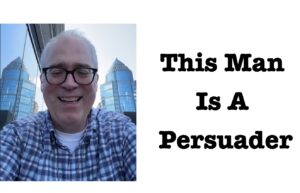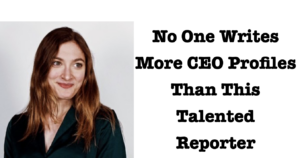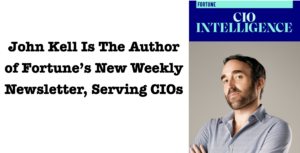
Semafor: How Tomorrow’s Tier 1 Looks Today
Semafor turned two this month. Do you care? Probably not. With the exception of OpenAI and other giants, Semafor doesn’t cover tech vendors or their products.

Semafor turned two this month. Do you care? Probably not. With the exception of OpenAI and other giants, Semafor doesn’t cover tech vendors or their products.

Fast Company EIC Brendan Vaughan had a busy week this week, chairing the publication’s tenth annual Innovation Festival. On Sept. 11 Brendan made time for the following SWMS Q&A, in which he discussed the role of AI in innovation…

No one interviews more CEOs than Jon Fortt. Now in his 14th year at CNBC, the TV co-anchor and podcaster enjoys interviewing founders too. Jon likes to explore the minds of responsible people — fully responsible, for everything. That’s where the lessons are.

Think back to what you were doing in 1992. Jim Aley was writing features for Fortune. Eight years later he was editing them for Business 2.0. In 2024 he edits them still, serving as deputy editor for the recently relaunched Bloomberg Businessweek.

To know Eric Savitz is to like him. Friendly and smart. Versatile. The man spent 27 years in edit, the next six in PR and then returned to edit for another five. Who else has done that, or could?

You need to be logged in to view this content. Please Log In. Not a Member? Join Us

At 27, she is one of the important Tier 1 journalists in the business. Important certainly to SWMS readers, because no one writes more CEO profiles than Brooklyn resident Jane Thier.

For most tech PR pros, the Financial Times isn’t top-of-mind. That may change. Last month the FT expanded its San Francisco-based bureau to “deepen its coverage of technology companies, venture capital and the intersection of money and technology.”

Jared Council is one of a kind. Yes, he covered AI for the WSJ, which is sort of a conventional thing for a good reporter to do. Then things changed. Jared blended what he did with who he was deep inside.

Who does John Kell write for again? Fortune? Fast Company? Business Insider? Well, all of them. John might have to rein things in starting this week, however, once he starts producing Fortune’s new CIO Intelligence newsletter.
YOUR ACCOUNT
FRIDGE NOTES
The day is coming that you will not be able to avoid framing the targets in terms of red or blue. So far you’ve been able to do that. Those days are coming to a close: large swaths of “the audience” are headed in this direction. If you don’t believe it, read this from Bloomberg. You will never see better reporting than this.
Superb reporting from Business Insider on what comes after Google Search. All the experts quizzed. The gist: these technologies and techniques are borderline mythical at this point.
In the latest installment of Sound Thinking...David Strom, a well-known IT reporter and security expert, discusses the threat of AI tricking security systems and luring them to catastrophe. What will that mean to editors? When will it happen? It’s not an if, it’s a when.
Good vision here from Jay Lauf. Interestingly, Jay suggests that B2B publishing will become a service business to B2B pros, providing value directly to individuals and organizations. Static content is dying very quickly. This is the point of the analysis from this great media organization.
America can’t read anymore. The good news: advertisers can advertise against different kinds of emotion in the copy. So even if the numbers of readers drop, there are more ways to attract ads. So perhaps the bad news will get cancelled out by the good. Sam Whitmore and David Strom discuss.
Can you imagine not needing to be a human being to be a superstar? You may remember Max Headroom. There’s plenty of examples of technology personas, but AI is a different world altogether. Is there a tech media angle to this item? Not really, but here she is — Xania.